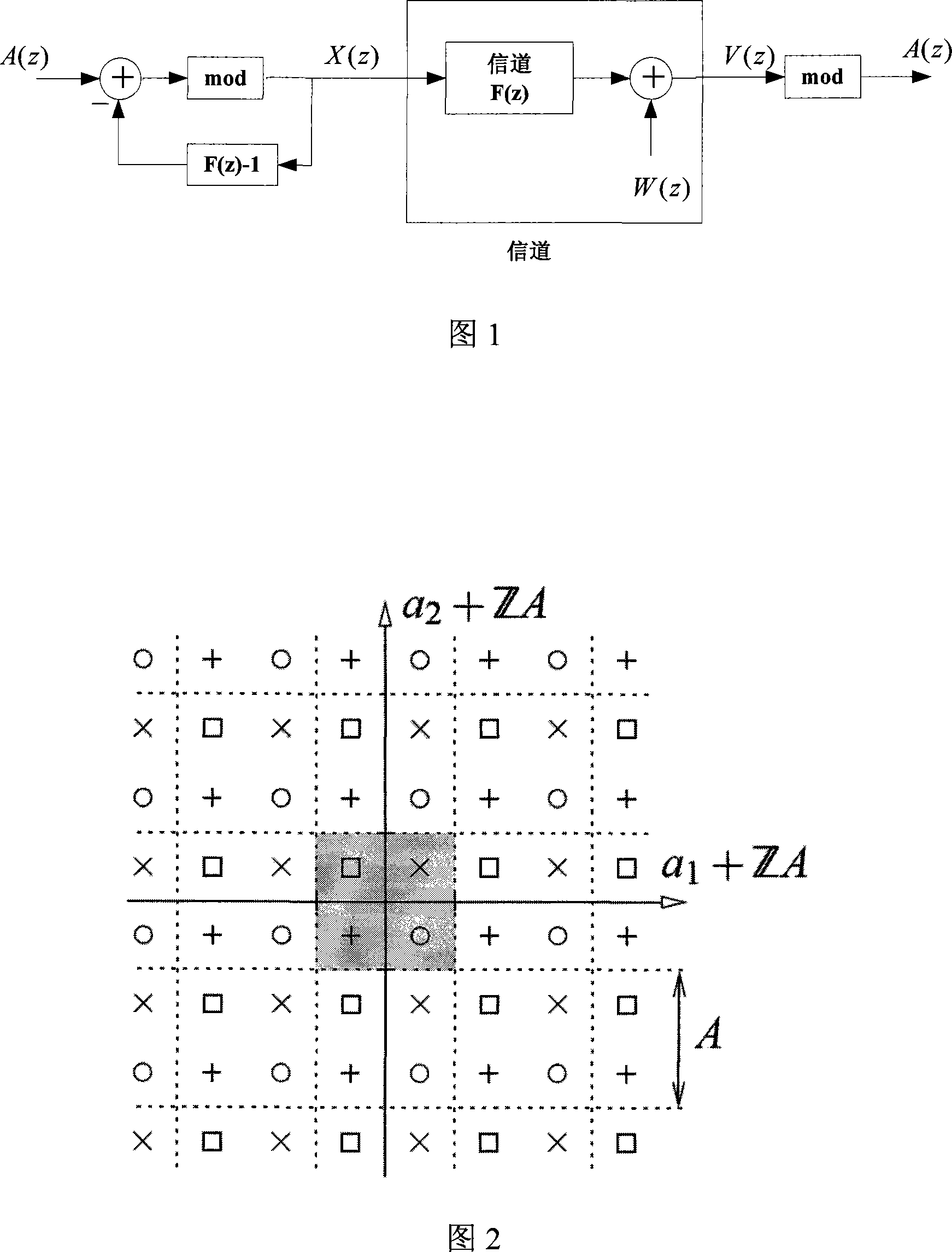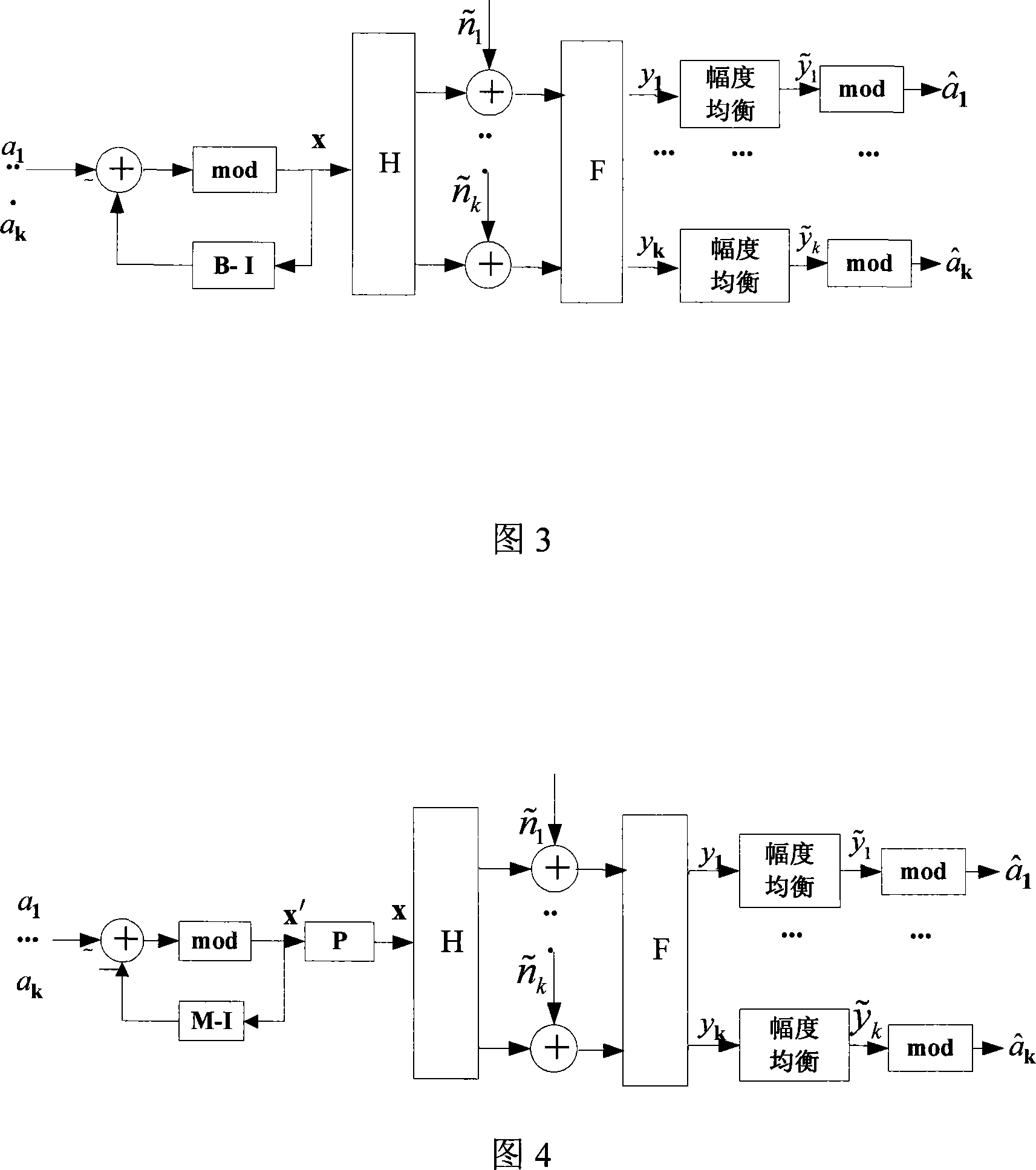Descending multi-user association space division multiplex signal transmitting and receiving method
A technology of space division multiplexing and transmission method, which is applied in the direction of signal channel, prevention/detection of errors through diversity reception, multi-frequency code system, etc., and can solve problems such as inability to use space division multiplexing technology and limited number of antennas
- Summary
- Abstract
- Description
- Claims
- Application Information
AI Technical Summary
Problems solved by technology
Method used
Image
Examples
Embodiment 1
[0097] image 3 It is a block diagram of the realization of downlink multi-user space division multiplexing. It is assumed that the number of antennas at the transmitting end (such as a base station) is equal to the number of users of space division multiplexing (that is, the number of transmitting antennas is equal to the number of receiving antennas). a 1 , A 2 ,...A K These are the pre-transmitted signals of the K transmitting antennas at the same time and on the same subcarrier. Here we ignore the IFFT (Inverse Fast Fourier Transform) at the transmitter and the FFT (Fast Fourier Transform) modules at the receiver. All signals are processed in the frequency domain. The specific implementation includes the following steps:
[0098] 1) The transmitting end and the receiving end respectively perform QL (orthogonal lower triangular matrix) decomposition of the channel estimation matrix H, and H=F can be obtained T ×S. Among them, F is a K-dimensional orthogonal matrix; S is a K-d...
specific Embodiment approach
[0115] In the present invention, the water injection theorem can also be used to further adjust the transmitting power of each transmitting antenna to improve the channel capacity of the system. See the specific implementation Figure 4 . Similarly, a 1 , A 2 ,...A K They are the pre-transmitted signals sent by K transmitting antennas at the same time and on the same subcarrier, and the number of transmitting antennas is K. Ignoring the IFFT module at the transmitting end and the FFT module at the receiving end, all signals are processed in the frequency domain. The specific implementation includes the following steps:
[0116] 1) The sending end and the receiving end respectively perform QL decomposition on the channel estimation matrix H to obtain the ideal channel estimation matrix H=F T ×S. Among them, F is a K-dimensional orthogonal matrix, and S is a K-dimensional lower triangular matrix;
[0117] 2) The transmitting end allocates the transmitting power for each transmitti...
PUM
 Login to View More
Login to View More Abstract
Description
Claims
Application Information
 Login to View More
Login to View More - R&D
- Intellectual Property
- Life Sciences
- Materials
- Tech Scout
- Unparalleled Data Quality
- Higher Quality Content
- 60% Fewer Hallucinations
Browse by: Latest US Patents, China's latest patents, Technical Efficacy Thesaurus, Application Domain, Technology Topic, Popular Technical Reports.
© 2025 PatSnap. All rights reserved.Legal|Privacy policy|Modern Slavery Act Transparency Statement|Sitemap|About US| Contact US: help@patsnap.com



